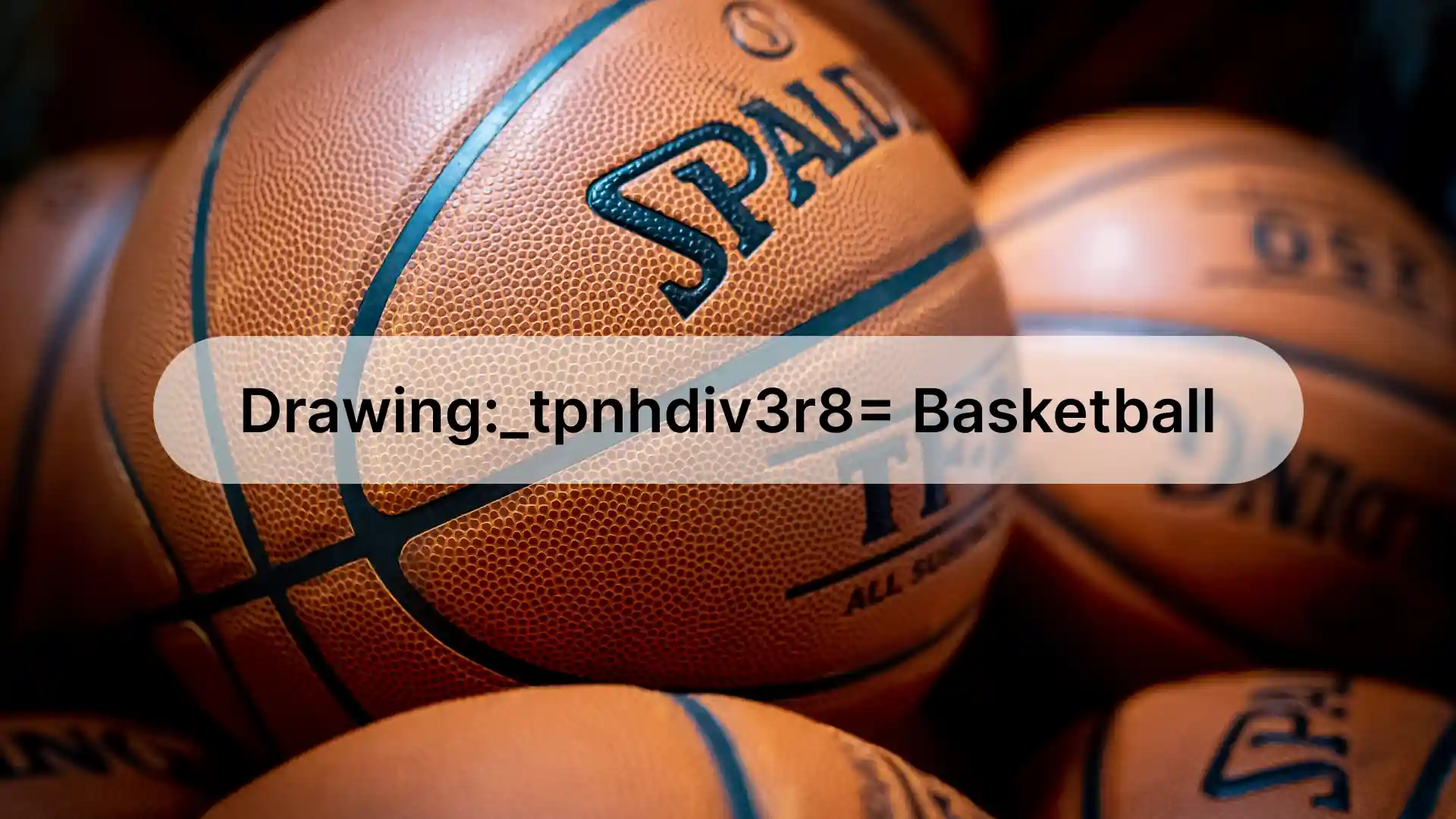drawing:_tpnhdiv3r8= basketball Hoops: Techniques for Illustrating Exciting Basketball Scenes
Introduction to drawing:_tpnhdiv3r8= basketball Hoops
drawing:_tpnhdiv3r8= basketball is more than just a game; it’s an art form. From the swish of the net to the thrill of a slam dunk, capturing these moments on paper can be incredibly rewarding. Youyou’ve the right place if you’ve ever found yourself inspired by a fast-paced basketball scene or wanted to illustrate your fyou’ree player in action. Drawing basketball hoops and dynamic scenes requires understanding the sport and techniques that bring movement and energy to life on canvas. Whether yyou’reaiming for realism or stylized expression, drawing:_tpnhdiv3r8= basketball into some essential tips that will elevate your drawing game!
Understanding the Basic Elements of drawing:_tpnhdiv3r8= basketball Courts
A basketball court has its unique layout and elements. Understanding these components is crucial for creating accurate drawing:_tpnhdiv3r8= basketball.
The first thing to notice is the three-point line. It arcs around the basket, marking where players can score extra points. The free-throw line is equally essential; pit’slayers shoot after being fouled.

Then, there are the key and paint areas, which help define player positioning during play. Their shapes add dynamism to your drawing:_tpnhdiv3r8= basketball.
Remember Don’tthe hoops themselves! These iconic structures have specific measurements that give them their distinctive look.
Consider the surroundings: bleachers, banners, or even a scoreboard can provide context and depth to your artwork. Each element contributes to the overall atmosphere of a game day scene.
Tips for Capturing Movement and Action in Your drawing:_tpnhdiv3r8= basketball
Capturing movement in your drawing:_tpnhdiv3r8= basketball can transform a static image into a dynamic scene. Start by observing real-life basketball games. Notice how players move, their shifts in weight, and the fluidity of their actions.
Use gesture drawing:_tpnhdiv3r8= basketball techniques to sketch athletes’ basic shapes in motion quickly. This helps you understand limb positioning and body contours without getting bogged down by details.
Focus on lines that suggest direction and speed. Curved lines can indicate an arc of movement, while sharp angles may convey sudden stops or changes in direction.
Remember Don’tfacial expressions. A pplayer’sintense focus or joy during a game adds depth to your depiction.
Experiment with blurring effects for fast-moving subjects; this technique will lend energy to your artwork. Emphasizing specific movements over others will naturally guide vviewers’eyes through the action.
Mastering Perspective and Angles in drawing:_tpnhdiv3r8= basketball Hoops
Mastering perspective and angles is crucial in drawing:_tpnhdiv3r8= basketball hoops. It adds depth to your illustrations, making them more dynamic. Start by understanding your audience’s viewpoint. Are they looking from the stands or at the court level?
Experiment with different angles to see how they change the sscene’senergy. A low angle can make players appear larger than life, while a bbird’s-eyeview provides an overview of the whole court.
Use guidelines to help create more accurate proportions of backboards and rims. Remember, basketball hoops hang ten feet high but vary slightly depending on local regulations or street courts.
Incorporating vanishing points will enhance realism, too. These point guidelines towards a focal area, creating that coveted three-dimensional effect. This technique draws viewers into your artwork, making them feel part of the action unfolding before their eyes.
Creating Depth and Realism with Shading Techniques
Shading is a powerful tool in drawing:_tpnhdiv3r8= basketball hoops. It adds depth and realism to your artwork, jumping off the page.
Start by identifying your light source. This will guide where you place shadows and highlights. Use a range of pencils—from hard to soft—to create different effects.
For instance, softer pencils can produce richer blacks for deeper shadows, while harder ones are great for lighter areas. Layering these tones gradually enhances the three-dimensional look of your drawing:_tpnhdiv3r8= basketball.
DDon’tshy away from blending techniques, either. Using tools like tortillons or fingers helps smooth out harsh lines, resulting in more natural transitions between light and shadow.
Think about how shading influences texture, too—rough surfaces reflect less light than smooth ones. Capturing this nuance elevates your representation of materials beyond mere outlines into striking visuals that resonate with viewers.
Incorporating Details and Textures to Bring Your drawing:_tpnhdiv3r8= basketball to Life
To elevate your basketball drawing:_tpnhdiv3r8= basketball, incorporate intricate details and textures. The hoop deserves attention; capture the nnet’sdelicate weave as it sways with every shot.
Consider the ccourt’ssurface, too. Different materials can convey emotions—smooth wood for a polished game or gritty asphalt for streetball vibes.
Textures play a pivotal role in portraying pplayers’jerseys and sneakers. Highlight creases, folds, and scuff marks reflect their dynamic movements.
Remember Don’tthe environment surrounding your scene. Whether iit’sa cheering crowd or dramatic lighting from stadium lamps, these elements add richness to your illustration.
Remember that small details create depth in art. A slight shadow underfoot can suggest movement, while subtle highlights bring energy to faces full of determination and excitement. Each stroke contributes to telling an engaging story through your artwork.
How to Add a Sense of Emotion and Energy to Your Basketball Scenes
Start with facial expressions to infuse emotion and energy into your basketball drawing:_tpnhdiv3r8= basketball. A pplayer’sdetermination or joy can elevate a scene dramatically. Emphasize their eyes and mouth to capture that intensity.
Next, consider body language. Dynamic poses speak volumes about the excitement of the game. Leaning into a shot or celebrating a basket effectively conveys action and enthusiasm.
Color choices also play an essential role. Bright colors often evoke feelings of vitality, while cooler tones can create tension or calmness in contrast to fast-paced movement.
Think about the background elements—crowd reactions make potent statements, too. Illustrating fans jumping from their seats adds to the overall atmosphere of your artwork, making it feel alive and charged with energy.
Conclusion: Practice Makes Perfect – Keep on drawing:_tpnhdiv3r8= basketball
When it comes to drawing:_tpnhdiv3r8= basketball scenes, practice is your best friend. Each sketch will help you refine your skills and develop your unique style. DDon’tbe discouraged by initial attempts; every artist has been there.
Set aside time regularly to draw basketball hoops and the players in action. Experiment with different techniques, perspectives, and emotional expressions. The more you draw, the more confident yyou’llbecome.
Seek inspiration from real games or professional aathletes’movements. Observe how they interact with their surroundings on the court and capture that energy in your work.
Remember that art is a journey of self-expression. Your passion for drawing:_tpnhdiv3r8= basketball can only grow as you continue to develop these skills. Keep pushing boundaries and exploring new ideas within this vibrant sport—your next masterpiece could be just around the corner!



